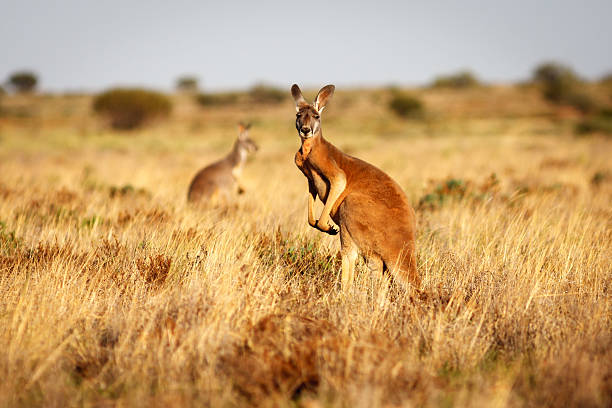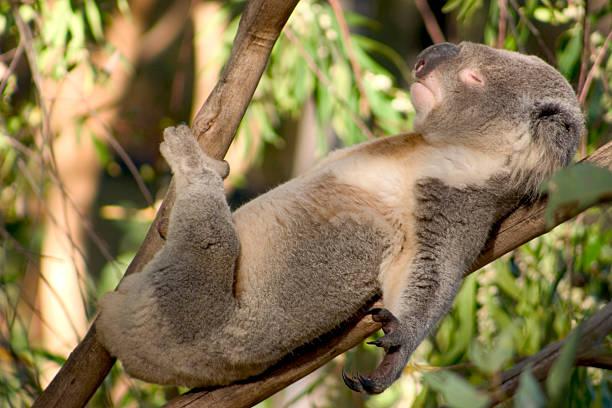Australia is a continent rich with unique biodiversity, largely due to its prolonged geographical isolation. Many of the animals native to Australia are found nowhere else on Earth. From the bouncing kangaroos to the elusive platypus, Australia’s wildlife is as diverse as it is distinctive. This article embarks on a fascinating exploration of the animals that call Australia their only home, highlighting the distinctive characteristics and habitats that make them so special.
The Iconic Marsupials

Marsupials are a subgroup of mammals most commonly associated with Australia. Unlike placental mammals, marsupials carry and nurse their young in pouches. Australia’s poster species, the kangaroo, falls into this category and is renowned for its strong hind legs and hopping locomotion. Other examples include the koala, which spends most of its life in eucalyptus trees, and the wombat, famous for its burrowing habits. All of these creatures have adapted to Australia’s unique environments, and they play a crucial role in the continent’s ecosystems.
- Kangaroo – Symbol of Australia, with powerful hind legs for jumping
- Koala – Tree-dwelling marsupial with a diet of eucalyptus leaves
- Wombat – A burrowing herbivore with strong claws for digging
- Wallaby – Smaller relatives of kangaroos with similarly adapted hopping skills
- Quokka – Known as the world’s happiest animal, found on Rottnest Island
Egg-laying Mammals: The Monotremes
Australia is the sole home to a group of mammals that lay eggs – the monotremes. This group includes the platypus and the echidna, both of which are evolutionary enigmas. The platypus, with its duck-bill and webbed feet, inhabits Australia’s eastern streams and rivers. The echidna, or spiny anteater, is covered in quills and uses its long tongue to feed on ants and termites. Their reproductive methods are a rare glimpse into the early stages of mammalian evolution, providing invaluable insight into the diversity of life.
Unique Birdlife: From Emus to Kookaburras
Avian species in Australia have also evolved in relative isolation, resulting in some unique birds. The emu, a large flightless bird, roams the vast open spaces of the Outback. Similarly, the colorful and noisy kookaburra is known for its distinctive ‘laughing’ call. Additionally, the endangered cassowary is another flightless bird, critical to rainforest ecology as a seed disperser.
Australian Birds Checklist:
- Emu – Second-largest living bird by height, native to the Australian Outback
- Kookaburra – Famous for its human-like laughter, found in woodlands and forests
- Cassowary – Colorful bird with a helmet-like casque, important for seed dispersal
- Cockatoo – Parrots with distinctive crests and curved beaks, many are endemic to Australia
- Lyrebird – Known for its remarkable ability to mimic natural and artificial sounds from its environment
Reptiles and Amphibians: A Testimony to Survival
Reptiles in Australia range from the venomous taipan snake to the prehistoric-looking saltwater crocodile, the world’s largest living reptile. Amphibians, such as the burrowing frog and the green tree frog, offer a contrasting display of adaptation, surviving in both arid and tropical climates. These species have developed unique survival strategies, and because of Australia’s diverse habitats, they exhibit a wide range of behaviors and modes of existence.
Marine Life: The Great Barrier Reef and Beyond
Australia’s seas are teeming with life, with the Great Barrier Reef standing as the largest coral reef system in the world. Unique marine species like the leafy sea dragon and the pot-bellied seahorse swim in these vibrant ecosystems. Many species of sharks, including the endemic grey nurse shark, patrol the oceans, playing a vital role in maintaining the balance of marine life. The waters surrounding Australia are just as unique as the land, revealing a whole other world of exclusive creatures.
Conclusion
In conclusion, Australia’s isolated development has given rise to many animal species that are found nowhere else. These range from the land-dwelling marsupials and egg-laying monotremes to the unique birds, reptiles, amphibians, and rich marine life. The conservation of these species is crucial, as they represent an irreplaceable part of our world’s natural heritage. Australia’s distinctive fauna continues to intrigue scientists, capture the imagination of nature lovers, and remind us of the incredible power of evolutionary processes that shape life on Earth.
